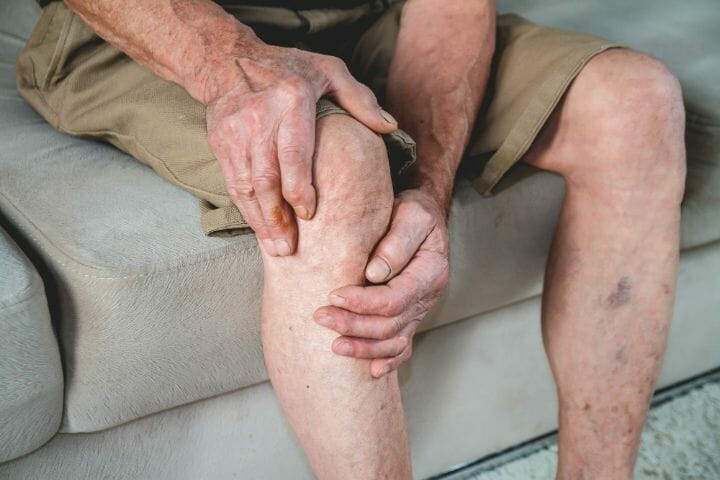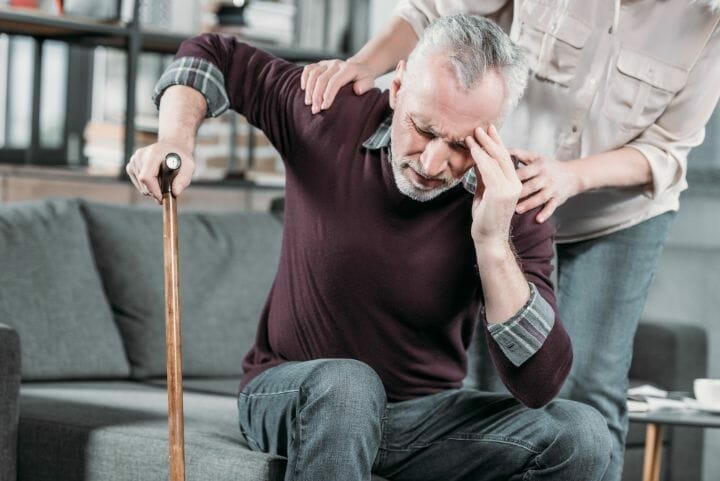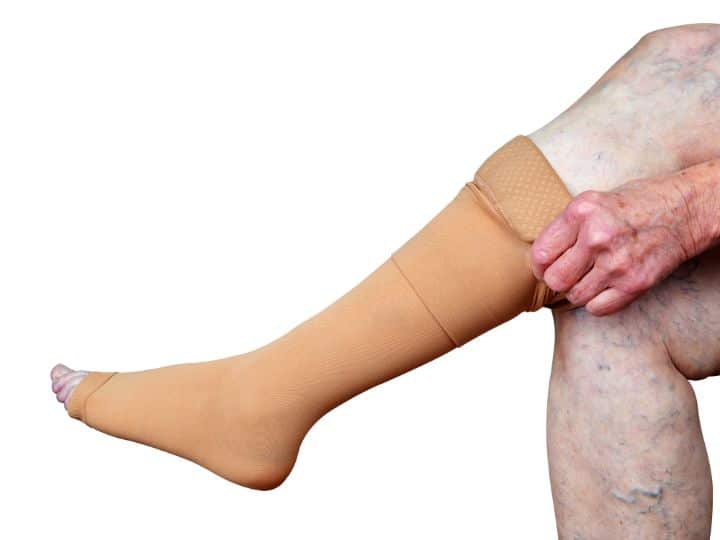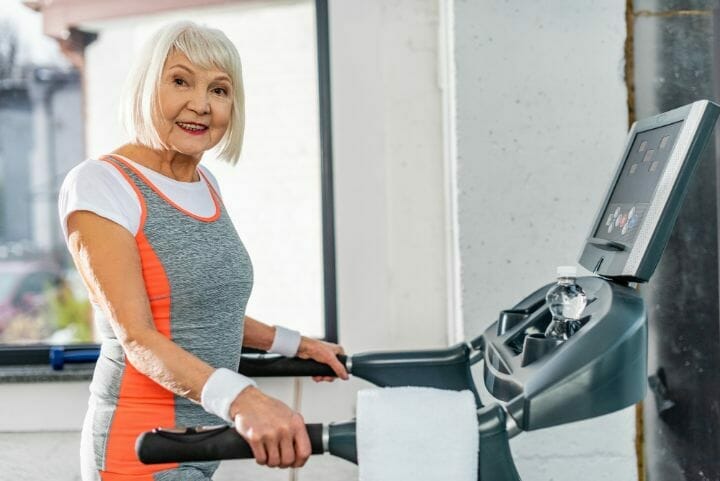How to improve leg circulation in the elderly? It is a problem for many elderly on how to maintain blood flow on their legs. The main reasons are a lot of deal with blood vessel problems, diabetes, kidney problems, and heart diseases. Most of the time, it is neglected by many people.
Except when they start to hurt, turn into a different color, or feel that you have to drag your feet. Oftentimes these are indications that it is getting worse.
Contents
What Causes Poor Circulation on Your Legs?
Peripheral Vascular Disease is a group of blood circulation disorders that causes the blood vessels outside of your heart and brain to narrow, block, or spasm. This can happen in your arteries or veins. And they can differ depending on which part of the leg is affected, how it is relieved, and what conditions they happened.
Peripheral Artery Disease (PAD)
It is when your arteries are narrowed, and unable to circulate the blood coming from the heart to the periphery. The most common symptom of this is the pain located on the dorsum of the feet, toes, and lateral malleolus, aggravated by elevation of the leg and relieved by sitting dangling.
The skin of the legs looks thickened and has no hair due to less nourishment on the area. Without blood circulating on your toes, necrosis can occur. Touching your legs will feel cold, from the loss of warmth of blood flow. And lastly, hip to leg pain can occur after an activity or walking (intermittent claudication).
Peripheral Venous Disease (PVD)
It is when your veins are narrowed, and unable to bring back deoxygenated blood back to the heart. This can be caused by an underlying cardiac problem (heart failure), or an injury. The most common symptom is the pain located on the medial aspect of the leg and ankle and relieved by elevation of the leg.
The legs are warm to the touch and can appear swollen due to the blood not being able to return to the heart. Sores can look irregular and shape and pinkish (granulation present), and the skin may also be thick but brownish.
Risk Factors of Poor Circulation on Your Legs
According to Healthline, these are the risk factors for poor circulation on your legs.
- People who are over age 50 – 25% of people develop PAD in the United States who are over 80 years old. Study on 3.6 million people, AAA, PAD, or carotid stenosis has increased from 1 in 50 to nearly 1 in 3 for the 40–50-year-old and 91–100-year-old age.
- Overweight – Obesity is identified to be one of the risk factors of poor circulation on the legs. This is from PAD, with underlying problems of hypertension, dyslipidemia (abnormal content of lipids/fats on the body), and hyperglycemia (a condition connected to high glucose levels, from diabetes.
- Abnormal cholesterol – Having high cholesterol (or a high LDL level) promotes plaque buildup in your arteries. When the intensity of plaque increases in your body, the arteries get narrowed and the blood flow gets limited. Having a high level of fat in your blood (triglycerides) also raises your risk for blocked arteries.
- History of cerebrovascular disease or stroke – Patients having PAD and symptoms, strokes are reported. Comorbidities such as prior stroke, age,diabetes mellitus, higher blood pressure, lower ankle-brachial index, prior amputation were each independently associated with it.
- Heart disease – Chronic heart failure is about high comorbidity burden and has a high impact on the utilization of health care and also the quality of life. Patients with CHF are more likely to develop the peripheral vascular disease, have decreased exercise capacity.
- Diabetes – Diabetes is another major risk factor of peripheral vascular disease. Accumulated glucose and the inability to process fats will lead them stuck in the bloodstream. And damage the arteries and veins that cause atherosclerosis, and blocks the passageway of blood.
How Can You Improve Leg Circulation?
Avoid Smoking
Smoking has been shown to promote the acceleration of atherosclerotic disease and has been identified as one of the strongest risk factors in the development of peripheral artery disease. Risks of having poor leg circulation are lowered, whenever an individual quits the habit. Although, people who are not smoking at all have the lowest chance.
Quitting to smoke can lower that risk, as mentioned above. It can be negotiated with your primary care provider, and physician. Guidelines will be given, not only physically, but also in the psychological aspects of the matter. Whether there is in need to undergo counseling or medical interventions is up to their specific needs.
Controlling Blood Pressure
The likelihood of developing poor circulation on the leg depends on the quality, and intensity of your blood flow. By being able to monitor your blood pressure, will keep you at bay with your heart, and blood vessels. Circulation on your leg can also be checked, only if without deep vein thrombosis (DVT) or cellulitis.
Taking your medications is necessary. The following blood pressure medications from the American Heart Association are diuretics, beta-blockers, ACE inhibitors, angiotensin II receptor blockers, etc. Most of all, blood thinners or anticoagulants are prescribed to patients especially those with PAD. This is to control any worsening symptoms or development of it.
You may also like The Ultimate Guide to Aging Well
Eating Right
Specific diets are required for patients with peripheral vascular diseases. According to one study, they recommended including eating fresh or frozen food without added sugars, minimizing intake of high-calorie sauces or salt, and use methods of cooking that will help to preserve the original nutrients.
The diet has to include fruits, vegetables, soluble fibers, whole grains, and also legumes. Using oils like vegetable oils, mainly olive and canola oils, but not coconut and palm oils, is preferred over animal fat. Cardiovascular diets are recommended, to follow DASH or Mediterranean diets with their physician’s permission.
Compression Socks and Elevation
To improve blood flow on your leg, you can use compression socks for your comfort. . This can affect the blood flow on your legs, with activities like walking or doing house chores. You can it every day for your safety. Here are the best compressions socks, for you to figure out what can be right for your problem.
While compression socks can help you, the elevation of your legs is one of the fastest relief to improve your leg circulation. You can put your leg with two pillows up, and you can do ankle pumps. Although, you can be mindful of whether this can trigger the 6 Ps of your PAD/PVD: pallor, pain, paresthesia, paralysis, pulselessness, and poikilothermia.
Exercises
Elderly people are encouraged to do cardiovascular exercises to improve their heart health. A simple walk in the park, a quick jog, or walking a dog can improve circulation on your leg. There are also specific exercises for you to follow.
You may also like Best Wheelchair for Broken Leg
Lying Down on Bed.
- Ankle Pumps
This is done with the elevation of the legs when you are lying on the back. Once placed in the proper position, point your toes to the ceiling and away from you. Do it slowly, about 10 to 20 times. Although, some patients require compression socks or bandaging to see better results.
- Ankle Rotation
In the same position, make a circle with one of your feet. Do it slowly, about 10-20 times. The direction can differ, where you start clockwise, or counterclockwise. This differs because it targets the muscles for eversion and inversion that are not easy to mind with ankle pumps.
- Calf Stretch
While lying on your back, use a band to wrap around the back of your foot. You can raise your leg. Then, fold the ankles until you feel the stretch. The stretch can be felt from the back of your thighs, and your legs. This will improve flexibility in the area involved.
Walking
According to Penn Medicine, a mindful workout to manage symptoms of PAD, or any peripheral vascular disease is done through a programmed walking regime. They have given evidence, that it can benefits patients to continue their daily lives even with the condition. Therefore, here are the 6 steps to be mindful of.
You can also use a treadmill. This shall be done with supervision, especially if symptoms of back pain to the legs occur. Intermittent claudication is a symptom that can vary whether it is a neurological condition or vascular in origin. Walking downhill, and for a long period of time are factors to be mindful of.
You may also like Best Chair Exercises for Seniors
When Is It an Emergency?
Consulting your physician will be a definite choice whenever the 6 Ps of peripheral health is experienced by the elderly. Symptoms to mind are: if there’s any throbbing or pulsating pain on the legs, swelling, and the legs feel heavy. Whether that’s the case or not, any unusual symptoms need to be reported.





